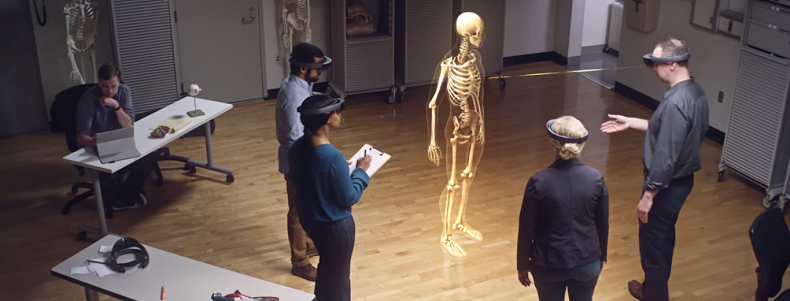
In the latest of our series of blogs from the Victory Square portfolio family, Shape Immersive CEO, Alex Chuang breaks down how the Blockchain can help to create the AR Cloud.
As Augmented Reality devices become more ubiquitous, we will have the means to access information at its origin, whether if it’s learning the history of a place or immersing ourselves in a multiplayer role-playing-game (RPG) in the real world.
Apple’s CEO Tim Cook said, “I see AR as being profound. It has the ability to amplify human performance instead of isolating humans, and so I’m a huge believer in AR. We put a lot of energy in AR, and it’s moving very fast.”
He’s right, things are moving fast. In 2017, four major AR development platforms were announced. With the release of ARKit and ARCore, Apple and Google are certainly taking the lead in helping AR breakthrough the novelty phase. Joining Apple and Google are Facebook’s AR Studio and Snapchat’s Lens Studio.
We’ve seen a proliferation of developers and companies building practical applications, a notable jump from a few years ago when one-off marketing and branding experiences dominated the scene.
Vuforia’s Chalk, for example, brings technicians and experts together over AR-enabled videoconferencing so they can solve problems more effectively while apps like Occipital’s Tap Measure can help homeowners or interior designers to quickly create a 3D floor plan of rooms by measuring in AR.
However, these experiences are siloed and there is no interoperability between different AR systems.
In order for mass adoption of AR to occur, AR content must persist in the real world across space, time and devices. As Ori Inbar, Partner of Super Ventures, describes, “persistence means I can create an AR experience in a physical space today, come back tomorrow and interact with it. Another user can also collaborate with it on a different device.”
For example, an artist can place her 3D virtual art in a plaza for the community to interact with it, regardless of which device they use. The 3D virtual art will “live” in that space as if it’s really there and will not disappear between different app sessions. To enable such a streamlined experience, the “AR Cloud” is required.

Just like how the Internet was able to connect people through the web, we need a software infrastructure that can enable everyone to have a shared AR experience.
This software infrastructure is commonly known as “The AR Cloud”. According to Matt Miesnieks, CEO of 6D.ai, the AR cloud is a machine-readable 1:1 scale model of the world. Some call it a real-time spatial map of the world or the world’s digital twin.
“The AR Cloud will become the single most important software infrastructure in the history of computing, far bigger than Google’s search index or Facebook’s social graph.”
-Ori Inbar, Partner at Super Ventures,
Ori, a recognized leading expert in AR, believes we will need to interact with digital experiences in real-time with one another or it is going to feel like surfing the web without friends.
The AR Cloud will enable everyone to have a shared experience and become the operating system for applications in the spatial era
So how do we build it?
Ori has laid out three main steps to building The AR Cloud
- A shareable and persistent point cloud aligned with real world coordinates
- The ability to instantly localize from anywhere and on multi devices
- The ability to support many users interacting with virtual content in real-time, on-device and remotely.
The first component is arguably the most daunting of the steps, but blockchain technology can potentially solve this.
A blockchain-based marketplace can incentivize a distributed workforce to collect georeferenced point cloud of the world. These individuals or enterprises can collect these protocol-compliant sensor data through depth cameras, LiDAR scanners or even smartphones.

The collected spatial data can then be licensed or sold on a decentralized spatial data marketplace. Buyers of this data will then be able to create immersive AR experiences that can be shared by many people regardless of the device they use.
For example, Rogers Arena can license their spatial data to Valve so they can create an immersive fan engagement AR experience for Dota 2 The International. Fans will be able to interact with virtual characters in real-time with one another for the duration of the event.
The ideal AR Cloud ecosystem should be open, transparent and interoperable. It should not be owned by any single one organization, but rather a shared resource among everyone in the network.
A trustless, permissionless protocol will ensure that individuals will have the ability to share data selectively, control how their data is used by others, and have the means to meet demand in an open market.
This piece was originally posted on Alex Chuang’s Medium page and is used with permission